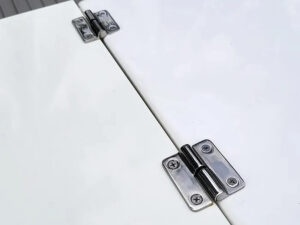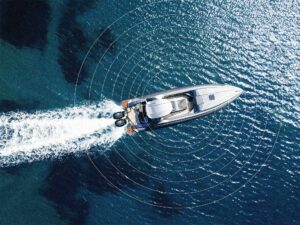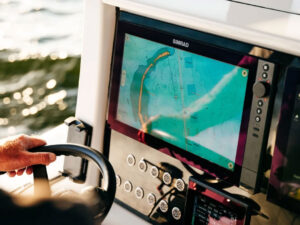Here’s a quick review of battery types available for your boat. Whether you’re just looking to extend the time between charges to keep your bilge pump running or intend to go hybrid and use some combination of internal combustion and electricity to propel your boat, you’ll find this primer helpful.
Flooded Electrolyte: The basic battery we all know. Cells composed of lead or antimony plates submerged in an acid bath.
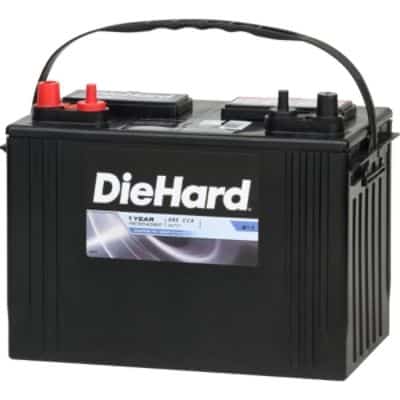
| |Sears Diehard M-2 Marine battery features 500 Cold Cranking Amps, 135-minute reserve capacity, weighs 46 pounds, measures 11″ L x 9-1/2″ high x 7″ wide and costs $94.99. sears.com|
Pros: Inexpensive, no special charging requirements, familiar, user-serviceable.
Cons: Stores less energy for their size, built. Electrolyte can spill or out-gas and damage fixtures and fittings. Physically breaks down when subjected to the pounding of boat service; Slow re-charge rate; high-self-discharge rate.
Suggested Replacement Interval: 2-3 years
Suitability: Put it in your car, truck or lawn tractor.
Absorbed Glass Mat (AGM): Rolls of fiberglass saturated with electrolyte.
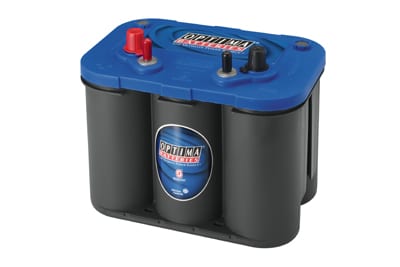
| |Optima’s Blue Top D34M features 750 Cold Cranking Amps, 120 minute reserve capacity, weighs 43.5 lbs and measures 10″ L x 8″ H x 7″W and costs $234.99. optimabatteries.com|
Pros: High storage capacity in a smaller footptrint; No special charging requirements; electrolyte cant spill or splash; nil self-discharge rate; fast re-charge rate; robustly stands up to marine service, where, unlike in automotive, there is no suspension system cushioning the ride.
Cons: Moderately expensive.
Suggested Replacement Interval: 6-8 years.
Suitability: Best choice for most boats.
Lithiun-Ion (LION)
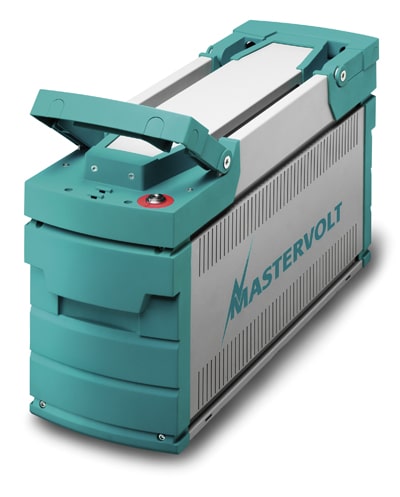
| |Mastervolt’s MLI 12/320 features 3200 Cold Cranking Amps, 320 minutes reserve capacity, weighs 121 pounds, measures 24.5″ L x 8″ W x 13.5″ H and costs $6,635.|
Pros: Extraordinary capacity for their size and weight; nil self-discharge rate; fastest recharge rate, electrolyte cant spill; robustly stands up to marine service, where, unlike in automotive, there is no suspension system cushioning the ride.
Cons: Expensive; required advanced battery monitoring system for safe and proper charging. Requires a high recharge current –100 amps.
Suggested Replacement Interval: We have no long-term experience using LION batteries yet.
Suitability: Boats using hybrid propulsion; boats requiring long use of battery without benefit of charging via generator, shorepower or other source. Boats where weight and space savings are as crucial to electrical capacity. Applications requiring repeated charge/discharge cycles.
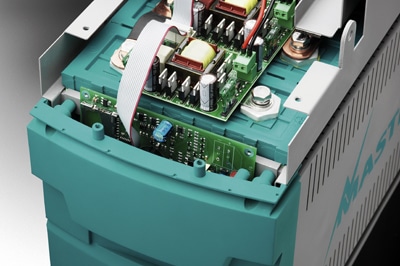
| |Mastervolt LION batteries come with an integrated battery management system to ensure safe operation and proper charging.|
Lithiun-Manganese (LIMA)
Regardless of the battery technology you choose, electricity remains the same. Some rules to live by. I call them the “great eight.”
1. Cold Cranking Amps are rated at 0-degrees F
2. Marine Cranking Amps are rated at 32-degrees F
3. Amp-hours is the reserve capacity, stated in minutes that a battery can withstand a 25-amp draw before requiring re-charge.
4. Two batteries wired in series doubles the voltage.
5. Two batteries wired in parallel doubles the ampacity.
6. Double the voltage and amp draw is halved.
7. Never draw batteries below 50-percent charge
8. Size battery banks based on 50-percent of battery capacity: if you need 200 amp-hours to run your stuff, install a 400-amp hour battery bank.
You know what? Make that 500 amp-hours. Just to ensure the most reliable service. After all, reliability is the number one feature we need from our batteries.
Takeaway: According to ABYC standards, a battery should never be installed below a connection in a fuel line.
For more on batteries check out these links:


